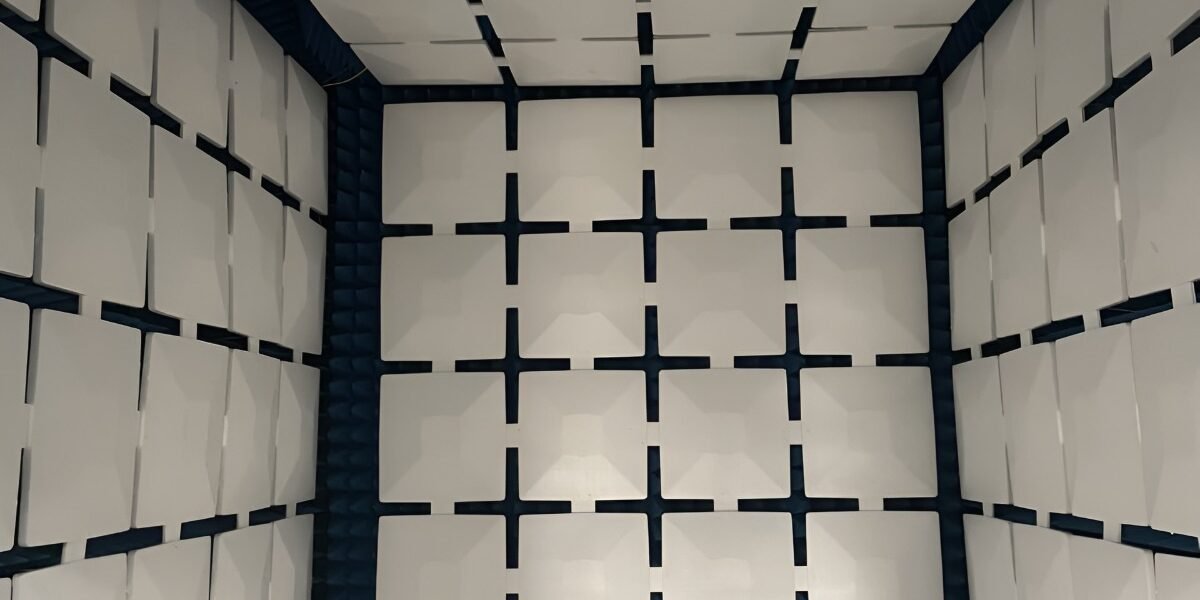While testing electronics, it’s vital to see how your device handles electromagnetic interference (EMI). Two main tools can help: an EMC anechoic chamber vs RF Shielded enclosure. But which one should you choose? This blog will highlight their differences and guide you step by step.
Choosing Between an EMC Anechoic Chamber and RF Shielded Enclosure
Before you choose, you need to understand what each does.
- An EMC Anechoic Chamber suppresses external signals, and internal reflections are dissipated. It provides a quiet environment to take electromagnetic noise measurements.
- An RF Shielded Enclosure blocks or attenuates external RF signals but does not dissipate internal reflections. It’s better suited for straightforward testing or development.
Both have their place, and your decision is determined by your test intention.
Know What You Need to Test
Ask yourself some questions before you choose an implementation:
- Do I need to test my product for EMI signal emission?
- Do I need to check if my product meets EMC standards?
- Am I only debugging or running simple shielding tests?
If you need full compliance testing, an anechoic chamber. For initial checks or basic RF shielding, a shielded enclosure might suffice.
When to Use an EMC Anechoic Chamber
Choose an anechoic chamber when you:
- Need full compliance testing (e.g., FCC or CE requirements).
- Require measurement of radiated emissions and immunity.
- Are near the end of your product completion.
Key Benefits of Using an EMC Testing Chamber:
- Accurate and consistent results.
- International standard test compliance.
- Low reflection error in measurement.
Common tests in anechoic chambers:
- Radiated Emissions Testing
- Radiated Immunity Testing
- Antenna pattern and gain testing
When to Use an RF Shielding Enclosure
Use an RF shielded box when:
- You require testing internally without access to external RF noise.
- You require low-cost testing for early-stage evaluation.
- You require pre-compliance or debug activities.
Benefits of using an RF shielded box:
- Lower cost and easier setup.
- Ideal for testing small devices or prototype purposes.
- Represses external signals sufficiently for most uses.
Apply it for:
- Leakage testing of signals.
- RF output measurement using basic setups.
- Pre-official EMI debugging to correct issues before official testing.
Key Questions to Ask Yourself (Based on General EMC Testing Principles and DMCRF’s Services):
What is your main EMC test you must conduct?
- If you are conducting most of the radiated emissions (EE) or radiated susceptibility (RS) tests, an anechoic chamber that is designed to reduce reflection is probably your best choice. DMCRF has a range of anechoic chambers in dedicated EMC and antenna testing.
- If you are planning to do conducted emissions (CE) or conducted susceptibility (CS) tests, an RF shielded enclosure that will not permit external electromagnetic interference is preferable. RF shielded enclosures are offered at DMCRF for various purposes.
Do you need to reduce electromagnetic reflections in your test environment?
- For radiated testing, reflections should be reduced to zero so the measurements are accurate. DMCRF’s anechoic rooms are equipped with RF absorbers in the walls, ceiling, and even on the floor for this purpose.
Is it necessary to block exterior electromagnetic signals to influence your test or your device under test (DUT)?
- If protection from external interference is a major concern, particularly for conducted tests or where sensitive equipment is involved, RF shielded enclosures provided by DMCRF are the answer.
Are there particular EMC standards (eg, CISPR, MIL-STD) that your testing needs to meet?
- Some standards include requirements or guidelines regarding the test environment. DMCRF has test chambers that meet certain standards such as CISPR 25 and MIL-STD 461. Familiarity with your applicable standards is important.
What frequency range does your electromagnetic signal include within the test?
- The effectiveness of RF absorbers in anechoic chambers and the shielding performance of enclosures can vary with frequency. DMCRF offers chambers and enclosures designed for different frequency ranges, including solutions for sub-6GHz and millimeter-wave 5G testing.
What is the size of your device under test (DUT) and the required test setup?
- The physical size of your DUT and the test equipment you are to use will determine the size of chamber or enclosure you require. DMCRF has a range of sizes suitable for different testing needs.
Final Thoughts
You don’t necessarily require the latest setup. Work with what best serves your purpose. If you’re still working on building your product, a shielded enclosure can be ideal. If you’re set to go to market and need to comply with international EMC standards, use an anechoic chamber.
Contact DMC today. Let’s see how we can help you achieve the dependable data you require.
Remember:
- Use shielded boxes for initial tests and debugging.
- Utilize anechoic chambers for official and ultimate testing.
Choose smart. Test right. Build better products.

